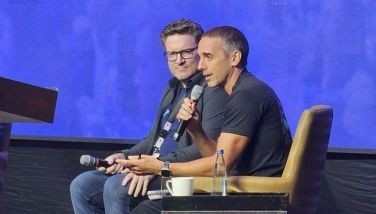SAS makes case for demand-driven forecasting
MANILA, Philippines - Technology has left very little guesswork even for business processes that traditionally relied on gut feel and intuitive insight such as demand forecasting.
The accuracy with which enterprises can predict market demand for goods and services and how this same market may behave in the future is now considered key to business survival.
SAS, a business analytics software and services provider, recently launched a forecasting solution that allows enterprises to make accurate demand forecasts by combining powerful analytics and business intelligence.
Charles Chase, business development manager for SAS Manufacturing and Supply Chain Global Practice, said Demand-Driven Forecasting (DDF) is a radical change from the way forecasting is done traditionally within organizations.
“Economic times have changed as a result of the global downturn. We can no longer just use past trends to predict the future as trends were disrupted. As a result, companies now have to look at other factors that influence demand like advertising, pricing, (and) sales promotion to predict the future,” he said.
For the first time, he said most companies have more supply than demand. The question is how much of that demand they can capture with the supply capability that they have.
As it usually costs more money to keep the manufacturing facility idle than it is to carry excess inventory, Chase emphasized the need for collaboration across the organization to do demand shaping.
“In the past, we look at demand signals and we try to understand those signals. Now we need to look at signals that are shaped by advertising or sales promotion and try to exploit those demand to create more demand,” he said.
However, most forecasting being done today is still done in Excel, although it doesn’t have the scalability and built-in analytics to analyze data.
To improve forecasting capability, Chase said companies must break those silos of communication and start collaborating across the organization and adopt a forecasting solution that would allow them to proactively drive demand.
“To do good analytics, you have to have access to data. What most companies must do is to consolidate all data into an enterprise-wide repository so information may be accessed by every department,” he said.
Nancy Bremmer, SAS-SAP global practice leader, affirmed that there are challenges to getting the data that one needs for analytics.
“Companies do not have just one data source. They have calculated data, point of sale (POS) data, call center data, data from data warehouses, and departmental data in spreadsheets,” she said.
“To totally understand the business, we need data from these different sources and to do analytics we may need data that don’t exist yet and (these) need to be created.”
One of the strengths of a SAS solution is that it has very sophisticated tools for data migration already embedded in the system.
“We can work with multiple data sources, bring them in and reformat them, standardize and synchronize them,” said Chase. “And bring in other types of data that may be needed for analytics.”
Chase cited a study made at Purdue University that showed companies that are leaders in forecasting tend to have five times improvement in inventories, two to three times improvement in customer service fulfillment, and at least two times better in improving gross profit margins.
Companies that have adapted the SAS demand-driven forecasting solution are said to have improved accuracy of forecast by one to 20 percent within the first year of implementation. It is available for implementation by small, mid-tier and large organizations.
By applying science to forecast and drive demand, SAS helps companies to have a structured approach to predicting markets and future trends.
Its forecasting solutions are licensed at more than 7,700 sites worldwide and used in many industries, including consumer packaged goods, bio-pharmaceuticals, automotive, and heavy manufacturing.
- Latest
























